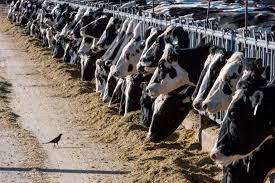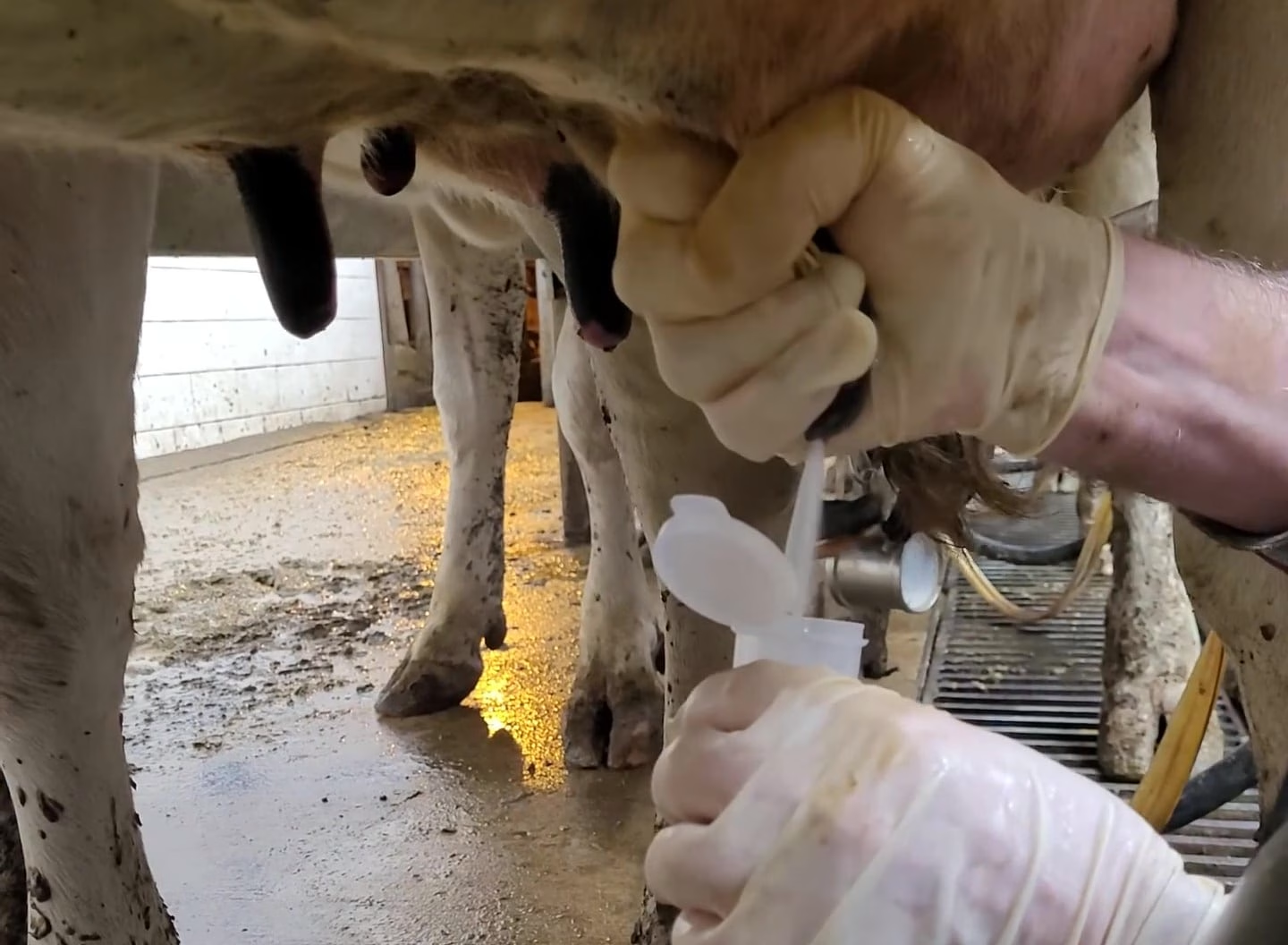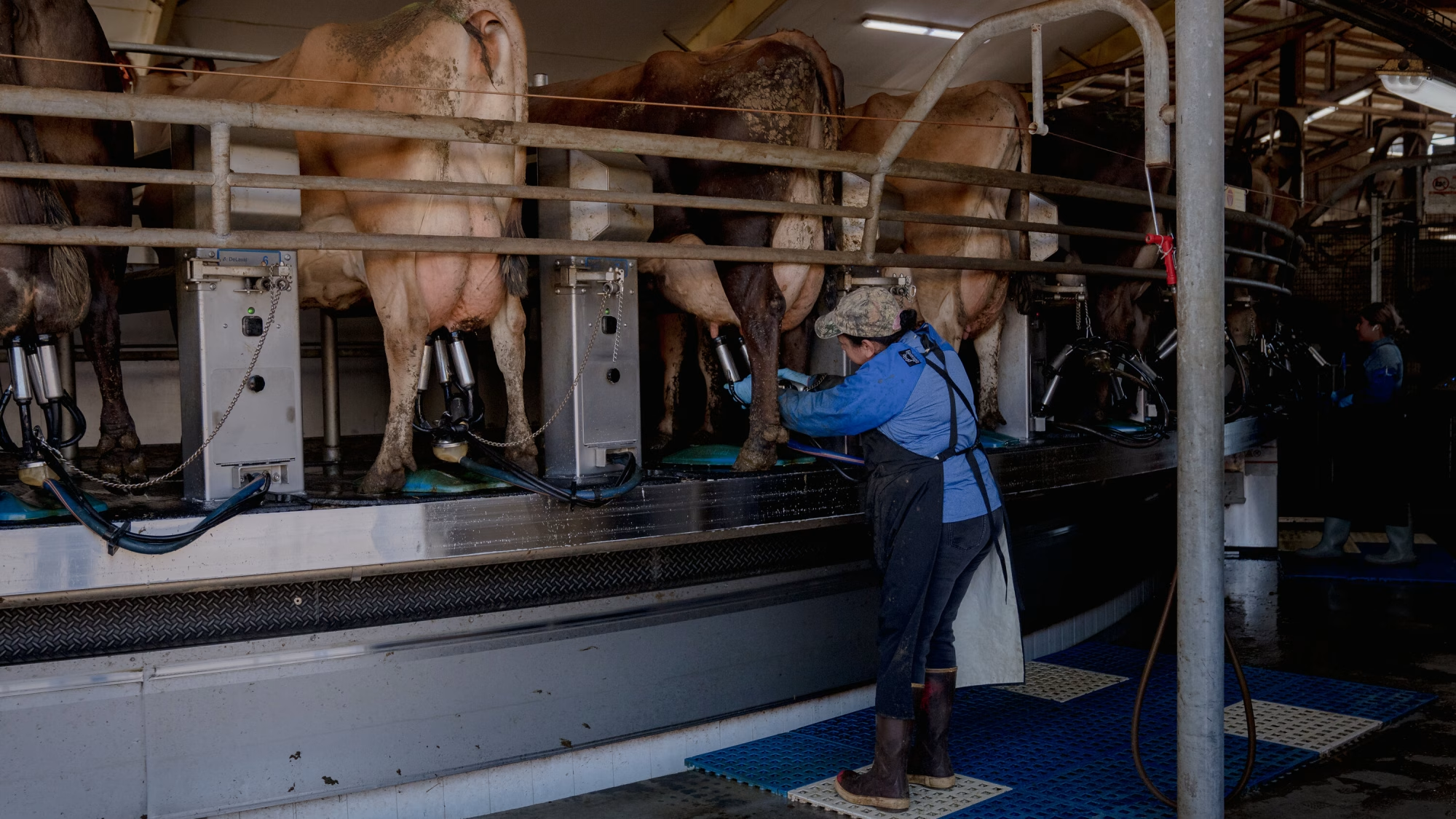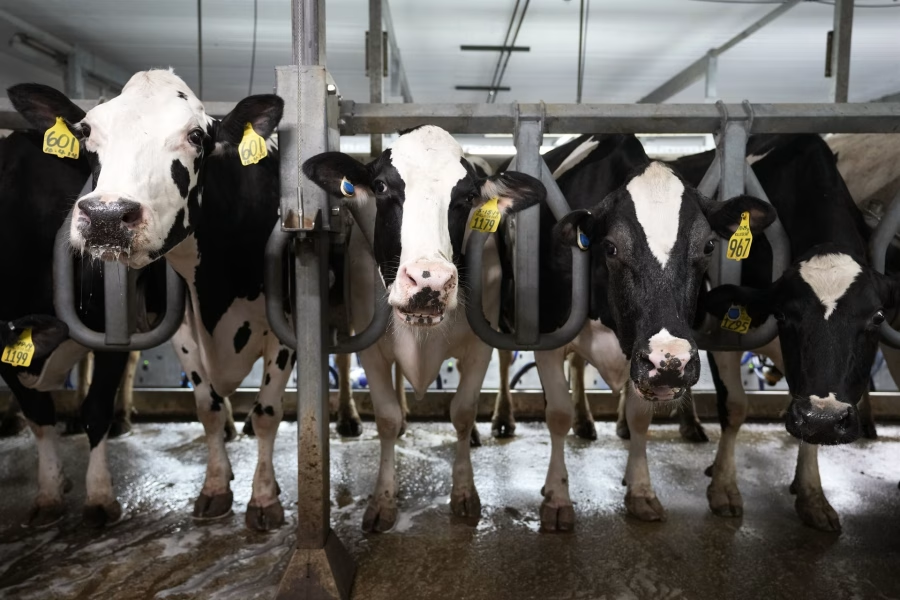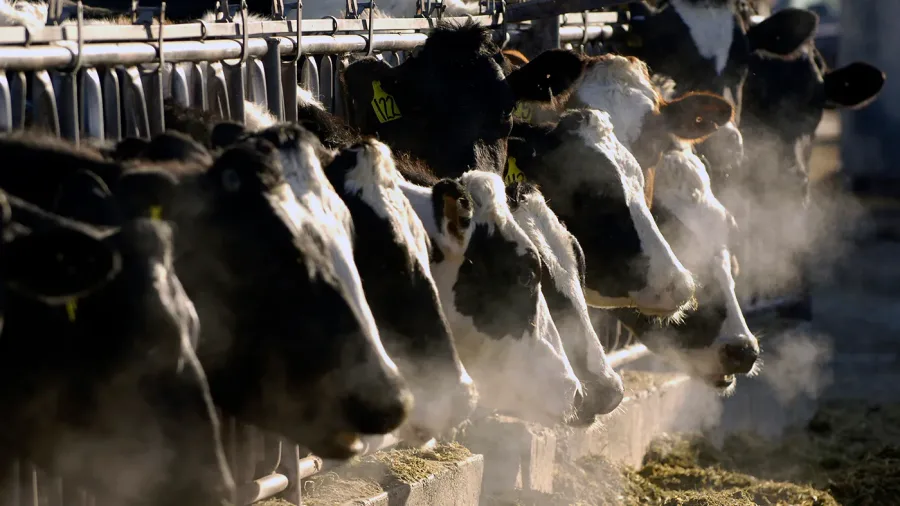Is raw milk worth the health risks? Explore why it’s gaining popularity and what dairy farmers should know about this trend.
Summary: The article delves into the increasing popularity of raw milk, despite serious health risks and government warnings. Highlighting recent outbreaks of foodborne illnesses linked to raw milk, it contrasts stringent federal regulations against a patchwork of state laws allowing its sale. Consumer enthusiasm, bolstered by social media and public figures advocating “food freedom,” is driving demand. The piece analyzes the historical impact of pasteurization on milk safety, juxtaposing it with the nutritional claims and perceived benefits championed by raw milk supporters. Additionally, the article explores the economic benefits for farmers and the technological innovations aimed at making raw milk safer for consumption.
- Growing consumer interest in natural, local farm-sourced foods is driving the popularity of raw milk.
- Despite government warnings, raw milk sales are legal in more than half of the U.S. states.
- Recent foodborne illness outbreaks, such as the salmonella incident in California, underscore health risks.
- Social media and public figures advocating for “food freedom” significantly influence consumer choices.
- Federal regulations mandate strict controls on interstate raw milk sales, clashing with lenient state laws.
- Pasteurization has historically enhanced milk safety, though raw milk advocates argue it diminishes nutritional value.
- Economic benefits for farmers and technological advancements aim to enhance raw milk safety.
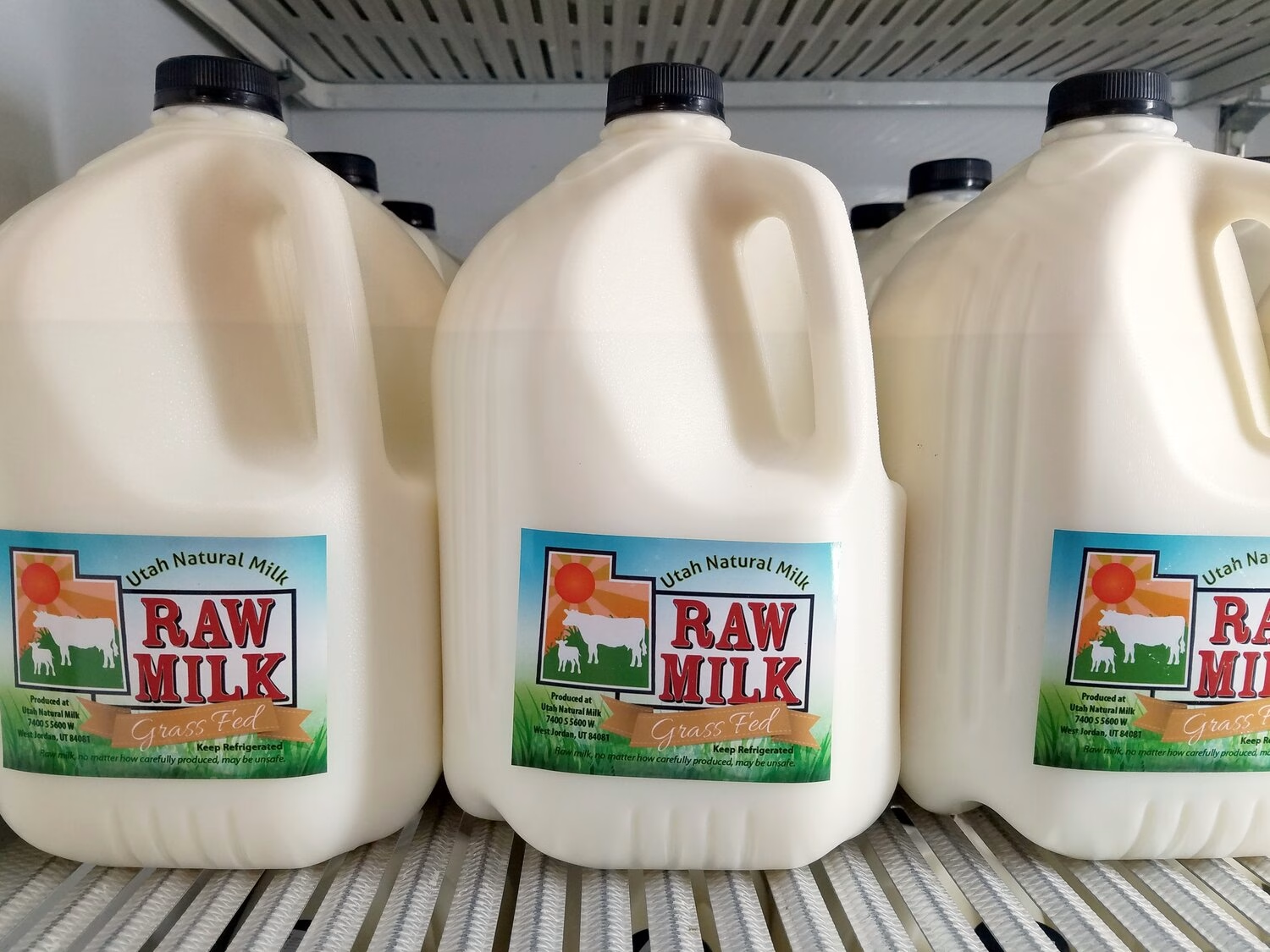
Raw milk is making the news again. Despite strong warnings from health regulators and a big salmonella epidemic in California, more individuals are turning to raw milk. Despite the impending danger of catastrophic foodborne diseases, this spike in popularity begs numerous concerns. Why are more people choosing raw milk? Is it worth the risk? Curious? Concerned? Stay tuned as we explore why raw milk captivates the interest and allegiance of so many people despite the apparent risks.
| Year | Volume of Raw Milk Sales (Million Gallons) |
|---|---|
| 2019 | 5.1 |
| 2020 | 5.4 |
| 2021 | 5.9 |
| 2022 | 6.3 |
| 2023 | 6.8 |
| 2024 (Projected) | 7.2 |
The Raw Reality: Why More People Are Choosing Unpasteurized Milk Despite the Risks
Despite caution and data, raw milk’s appeal is obvious. Have you noticed that more people are talking about it lately? According to the Wall Street Journal, GetRawMilk.com, which helps customers identify local raw milk producers, has seen a significant increase in users. “The site’s creator stated that it garnered 97,000 visitors in May alone,” according to the report [WSJ article link]. There are a lot of individuals interested in raw milk!
Furthermore, the interest in raw milk is more comprehensive than in niche populations. It has piqued the interest of prominent public personalities. For example, presidential candidate Robert F. Kennedy Jr. has expressed his support for what he calls “food freedom.” When questioned about his position on raw milk, a representative for Team Kennedy told the Wall Street Journal, “Mr. Kennedy believes that consumers should be able to decide for themselves what foods to put into their bodies” [WSJ article link].
It’s fascinating to witness this growing trend. While health professionals caution about potential hazards, consumer demand is steadily rising. The raw milk controversy has evolved into a broader discourse about personal choice and rights, as well as the economic impact of the raw milk industry.
Raw Milk Laws: A State-by-State Jigsaw Puzzle

The legality of raw milk is all over the map, very literally. Did you know that selling raw milk in more than half of the states is entirely legal? California is one of 14 states that sell raw milk alongside other dairy products at retail stores. In 19 states, raw milk may be purchased straight from a farm. Interesting, right? Louisiana made news last month when it became the most recent state to allow on-farm sales.
But it doesn’t stop there. Some states have more innovative alternatives, such as herd-sharing schemes, which have made raw milk legal to buy in six states thus far. Meanwhile, five states allow you to purchase raw milk for your dogs. On the other hand, several states, such as Hawaii, Nevada, Rhode Island, and the District of Columbia, outright prohibit raw milk sales. The role of policymakers in these regulations adds another layer of complexity to the legal status of raw milk.
The patchwork of rules demonstrates how diverse and complex the topic is. Examining how various jurisdictions strike the delicate balance between consumer choice and public health is intriguing. What are your thoughts? Should customers be able to select, even if it means taking risks?
From Tradition to Safety: How Pasteurization Revolutionized Milk Consumption
Before pasteurization, drinking raw milk was the norm rather than the exception. People in the late nineteenth and early twentieth century needed access to contemporary refrigeration and sanitary methods. Milk was often drunk immediately after it was obtained, limiting the time for hazardous germs to proliferate. However, this method was with hazards. Tuberculosis, scarlet fever, and typhoid were all widespread diseases, and raw milk served as a significant vector for these illnesses. Tuberculosis was such a serious health concern that it resulted in several deaths. It is believed that tainted dairy products caused the deaths of around 65,000 individuals during 25 years.
So, why was pasteurization introduced? The solution is in its capacity to contain these fatal epidemics. The procedure, named after Louis Pasteur, involves heating milk to a specified temperature for a given time to destroy hazardous germs. It was a groundbreaking procedure that significantly decreased the number of milkborne diseases. According to historical records, one of the first supporters of pasteurization was Dr. Henry L. Coit, who urged for its wider use to preserve public health. Since then, pasteurization has been the norm, altering dairy safety and drastically reducing illness rates associated with milk intake.
Facing the Cold, Hard Truth: The Health Risks of Raw Milk
When discussing raw milk, it is critical to acknowledge the facts: the health hazards are genuine and may be severe. Raw dairy contamination has been associated with several foodborne infections, including E. coli, Salmonella, and Campylobacter. The worst salmonella epidemic in a decade, which affected 165 people earlier this year, has been linked to raw milk from a California farm. Such occurrences underscore the potential risks that exist in every unpasteurized cup.
Despite ardent endorsements from raw milk advocates, health regulators and organizations like the FDA have repeatedly advised against its use. The Centers for Disease Control and Prevention (CDC) estimates that raw milk causes 150 hospitalizations and 1-2 yearly fatalities due to foodborne diseases. The FDA’s restriction on interstate sales of raw milk, which has been in force since 1987, emphasizes the need for vigilance. Furthermore, jurisdictions such as California require specific label disclaimers that warn customers about the health dangers of consuming raw milk.
Historical evidence supports these dangers. From 2008 to 2010, raw milk was related to many outbreaks:
- Four people were ill in Missouri after drinking raw goat milk infected with E. coli O157 H7.
- Fourteen people became ill in Connecticut.
- Eight people in Colorado became sick due to Campylobacter and E. coli O157 H7 contamination.
These frequent outbreaks highlight the continuous public health risks presented by raw milk.
In contrast, the PMO (Pasteurized Milk Ordinance) strategy has significantly decreased milkborne illness outbreaks in the United States, from 25% before WWII to less than 1% now. So, although the temptation of raw milk is powerful, it’s essential to consider the possible health and life risks. Consumers can choose but deserve to be fully aware of the hazards.
#RawMilkRevolution: How Social Media is Redefining Dairy Choices
Social media has become vital for molding public perception; raw milk is no exception. Influencers on platforms such as Instagram, YouTube, and TikTok have significantly contributed to the expanding adoption of raw milk. Their recommendations often include fascinating anecdotes about personal health improvements, which resonate with a large audience.
Doctors and dietitians have always held power in scholarly papers and clinical settings. They utilized social media to express their support for raw milk. These specialists offer credibility typical influencers may need to improve by posting thorough articles on raw milk’s possible advantages, such as enhanced gut health and increased nutritional value.
Lifestyle personalities also have an essential influence. These celebrities often include raw milk in their daily routines, using it in anything from breakfast smoothies to handmade cheese dishes. The easygoing, personable manner in which they offer raw milk makes it seem less contentious and more like a healthy lifestyle choice.
For example, a well-known fitness influencer may share a video comparing raw versus pasteurized milk, emphasizing how the former includes more beneficial enzymes and probiotics. Another option is to do a Q&A session, addressing frequent concerns and sharing personal experiences with the health advantages of raw milk.
However, it is not limited to anecdotal evidence. Influential individuals regularly use scientific findings and expert views to support their assertions. This technique contradicts health professionals’ warnings, providing a supposedly balanced position that appeals to consumers’ need for control over their dietary choices.
What was the result? An ever-expanding network of raw milk enthusiasts who are knowledgeable and secure in their decisions, primarily due to the persuasive power of social media. This trend shows no signs of slowing down as more influencers join the cause, propelled by personal conviction and audience need.
Raw Milk: A Nutrient Powerhouse or a Health Risk? Exploring the Consumer Perspective
From a consumer standpoint, many raw milk supporters say that the advantages greatly exceed the hazards, providing an entirely different story than official warnings. They cite unpasteurized milk’s nutritious richness, better flavor, and natural qualities as critical factors. Have you ever wondered if pasteurization removes vital nutrients from milk? This is a typical point of disagreement among raw milk enthusiasts.
Supporters think raw milk is a nutritional powerhouse. Sally Fallon Morell, president of the Weston A. Price Foundation, states that “raw milk contains both fat-soluble and water-soluble vitamins, minerals, enzymes, and beneficial bacteria, all of which are destroyed during pasteurization” [source: Weston A. Price Foundation].
Taste is another critical component. Many customers believe raw milk tastes better than pasteurized alternatives. “Once you’ve tried raw milk, going back to pasteurized just feels wrong,” says Judith McGeary, raw milk advocate and Farm and Ranch Freedom Alliance founder. “The flavor is fuller, creamier, and more satisfying” [Farm and Ranch Freedom Alliance]. Have you tried both sorts and seen any difference?
Then there’s the pleasure of ingesting a thing in its most natural form. Raw milk appeals to individuals who value organic and lightly processed goods. Many proponents believe raw milk aligns with a more prominent natural living and health philosophy. “For me, it’s about having a deep connection to what I consume,” says Three Stone Hearth’s co-founder Jessica Prentice. “Raw milk represents trust in the natural process and a connection to the farm where it was produced” [source: Three Stone Hearth].
In an age where food preferences increasingly reflect personal ideals, many people see raw milk drinking as natural, holistic sustenance. Consumer Susan Bell eloquently states, “Choosing raw milk is less about rebelling against regulations and more about embracing a lifestyle that values purity and wholesomeness” [source: GetRawMilk.com].
Small-Scale Gains: How Raw Milk is Boosting Revenues for Dairy Farmers
Raw milk sales have a significant economic influence on small dairy farms. As demand for unpasteurized milk rises, many farmers are discovering a profitable niche market with much better profit margins than standard pasteurized milk. How does this transformation affect the economic environment for these small-scale operators?
Raw milk is often sold at a premium, sometimes double the cost of ordinary milk. This significant pricing gap may be a game changer for small farmers competing with large-scale dairy businesses. According to studies, a gallon of pasteurized milk costs between $3 and $4, whereas raw milk may cost up to $8 per gallon, depending on location and state restrictions. Imagine tripling your revenue for every gallon sold—it’s no surprise that more farmers are exploring the move.
Furthermore, the direct farm-to-consumer sales approach often used for raw milk avoids intermediaries and related expenses, enhancing the farmer’s profit margins. When customers buy raw milk directly from farms or via herd-sharing programs, producers get a more significant portion of the cash. This stronger producer-consumer connection has the potential to strengthen community relationships and increase customer loyalty, both of which are essential advantages for any small company.
However, the financial rewards have drawbacks. Farmers must navigate a maze of state rules to reduce dangers and adhere to strict health and safety measures. Adequate sanitation, testing, and equipment might be expensive. However, individuals who succeed in maintaining high standards often find it rewarding.
Consider a small dairy farm in Pennsylvania that converted to raw milk sales and had a 40% boost in income within the first year. The farm’s owner said that the devoted customer base and increased profit margins justified the initial expenditures of switching to raw milk production. Stories show that people ready to take risks may reap substantial financial benefits.
The industry is expected to expand as more customers learn about raw milk and its claimed advantages. Increased consumer knowledge and demand might result in a more sustainable and prosperous future for small dairy producers. So, how will this movement impact the dairy business in the long term? Only time will tell, but the potential economic benefits for farmers entering this specialized market are clear.
Milking Innovation: Harnessing Technology and Modern Practices for Safer Raw Milk
In today’s ever-changing dairy sector, technology and advanced agricultural methods are critical to making raw milk safer for customers. Have you ever considered how improvements in milking equipment and hygiene standards may lower the danger of contamination?
First, let’s discuss milking equipment. Farmers no longer milk their cows by hand into open pails. Modern dairy farms utilize automated milking equipment with sensors to check cow health and milk quality. These technologies are intended to limit human touch, lowering the risk of contamination. For example, specific devices mechanically clean and disinfect the teats before and after milking, ensuring the milk is gathered hygienically.
Hygiene practices have also seen significant advances. Today, dairy farms adhere to high hygiene requirements that were unthinkable a few decades ago. Farmers are taught optimum hygienic standards like wearing gloves, sanitizing equipment regularly, and chilling milk immediately to prevent bacterial development. These actions are critical in avoiding the spread of microorganisms that might cause foodborne diseases.
Finally, let’s look at the advances in testing and monitoring. Modern farms use fast testing procedures to detect infections and pollutants. For example, some farms use real-time PCR (Polymerase Chain Reaction) technology to identify hazardous germs like Salmonella and E. coli nearly immediately. Furthermore, continuous monitoring devices check milk storage conditions, such as temperature and humidity, to guarantee that the milk is safe long after collection.
These technological innovations and stringent hygiene practices are more than just gimmicks; they are critical elements that may make raw milk a safer alternative for people who want it. While the argument over raw vs. pasteurized milk continues, it is evident that technology and contemporary agricultural techniques are rising to the challenge of food safety.
Thinking About Diving Into the Raw Milk Market? You’ve Got a Lot to Consider. Let’s Break It Down.
Are you considering entering the raw milk market? There is a lot to consider. Let’s break it down.
1. Ensure Safety First:
- Regular Testing: Consistently test your milk for pathogens. Regular checks can prevent a disaster even if you’re confident in your process.
- Upgrade Hygiene Standards: Maintain stringent hygiene practices throughout the milking process. Cleanliness is non-negotiable.
- Temperature Control: Keep raw milk chilled immediately after milking to slow down the growth of harmful bacteria.
2. Navigate Legal Requirements:
- Know Your State Laws: Laws vary widely. Make sure you understand what’s legal in your state and comply fully.
- Labeling: If your state requires disclaimers about the risks of raw milk, ensure all your labels are up to code.
- Stay Updated: Regulations can change. Stay informed about new laws or amendments that could impact your operations.
3. Market Your Products Smartly:
- Educate Your Customers: Use your website and social media to inform consumers about the benefits of raw milk and the precautions you take to ensure safety.
- Highlight Unique Selling Points: Whether it’s the nutritional benefits, the freshness, or the local origin, emphasize what sets your raw milk apart.
- Engage with the Community: Participate in local farmers’ markets, offer farm tours, and build relationships with your customers. Transparency builds trust.
Entering the raw milk industry is more than simply a financial choice; it is a commitment to provide a unique product safely and responsibly. Take these measures carefully, and you’ll be on your road to success.
The Bottom Line
As previously discussed, raw milk’s growing popularity is evident, fueled by social media influence and advocates for “food freedom.” Legal status varies significantly across states, adding another complication to the problem. While many people appreciate the nutritional advantages of raw milk, the health dangers and severe foodborne infections must be noticed. The mix of consumer interest and government warnings produces a beehive of discussion.
So, what is the takeaway here? It is critical to consider both possible rewards and hazards. Is raw milk’s nutritious profile worth the risk of illness? Or do the safety and consistency of pasteurized milk make it a more dependable option? Finally, the option is yours. Make an educated choice consistent with your beliefs and the well-being of your family.








